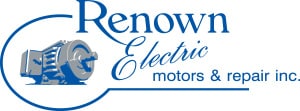Blog
While the transportation industry heavily relies on combustion motors, there has been a recent shift in focus to electric-powered vehicles. From cars and trucks to trains and locomotives to ships and ferries and not to forget mining equipment and buses, nearly every mode of travel can utilize electric motors for power. By converting electrical energy (i.e., electricity) into mechanical energy (i.e., motion), they help vehicles bring people from one place to another with greater efficiency than combustion motors.
Given the essential role electric motors play in the transportation sector, it important for industry professionals to invest in proper maintenance to ensure the equipment continues to operate as intended. The following blog post outlines the applications of electric motors in the transportation sector and the importance of investing in maintenance work.
Applications of Electric Motors in the Transportation Sector
As environmental consciousness increases, more and more commuters are turning to public transportation. This trend, coupled with heightened emissions guidelines, challenges industry professionals to find ways to decrease emissions without significantly increasing operating costs. One potential solution is using electric motors in place of combustion motors, which leads to enhanced energy efficiency and reduced environmental impact.
The two main types of electric motors used in the transportation sector are AC motors and DC motors.
- AC motors are powered by alternating current (AC). They are available in four classifications: linear, induction, permanent magnet and synchronous. Induction motors are further classified into single-phase and three-phase motors, while synchronous motors are further classified into hysteresis (typically very small motors) and reluctance motors.
- DC motors are powered by direct current (DC). They are available in three classifications: self-excited, separately excited, and permanent magnet. Self-excited motors are further classified into shunt, series, and compound motors.
They find use in a wide range of transportation vehicles include:
- Public transportation vehicles, such as buses, cable cars, ferries/water taxis, light rails, monorails/tramways, streetcars/trolleys, and subways
- Trains and locomotives, including cargo and commuter trains
- Ships and other marine vehicles, including long- and short-haul cargo, cruise ships, and military ships
- Mining vehicles, including loaders, muckers, trams, scoops, haulers and utility vehicles.
The choice of motor for all of these vehicles depends on the needs of the application. For example, trains use DC motors to ensure railway traction and AC motors for long-distance travel, while ships used both AC and DC motors for their propulsion systems.
[maxbutton id=”2″ ]
Importance of Electric Motor Maintenance in the Transportation Sector
Similar to the motors used in other industries, the electric motors used in the transportation sector must receive proper maintenance to ensure they continue to operate effectively and efficiently. Industry professionals should establish a maintenance schedule tailored to the motor and its application. Otherwise, they risk lower efficiency, shorter service life, and other motor problems, all of which can lead to increased motor costs. In the case of motor failure, financial burdens are even greater as failed motors can cause significant service delays and, consequently, significant loss of revenue.
There are three main methods of maintenance: reactive maintenance, preventative maintenance, and predictive maintenance. Reactive maintenance programs involve resolving problems once they occur, while preventative and predictive maintenance programs work to prevent or reduce the effect of problems on the overall system. Maintenance programs that consider all three methods, especially the latter two, are important to ensuring the electric motor needs of the transportation sector continue to be met.
Electric Motor Maintenance Services From Renown Electric
At Renown Electric, we fully understand how electric maintenance services support the success of the transportation sector and beyond. We’ve provided motor maintenance and repair services for over 30 years. This experience, combined with our state-of-the-art facilities and highly skilled team members, allows us to offer our customers effective and affordable predictive and preventative maintenance and support services for nearly any electric motor management need.
Our preventative and predictive maintenance capabilities include:
- Dynamic balancing
- Infrared thermography
- Laser alignment
- Oil analysis
- Vibration analysis
- Winding analysis
- Motion Amplification analysis
We also provide a broad selection of repair services, including:
- Generator rebuilding and rewinding
- Gearbox rebuilding and rewinding
- Sheave regrooving and manufacturing
- Machine shop services
- Servo motor repair
- Pump repair
- Motor drive repair
Contact Us Today to learn more about our electric motor maintenance and repair services.
[maxbutton id=”2″ ]









Comments are closed